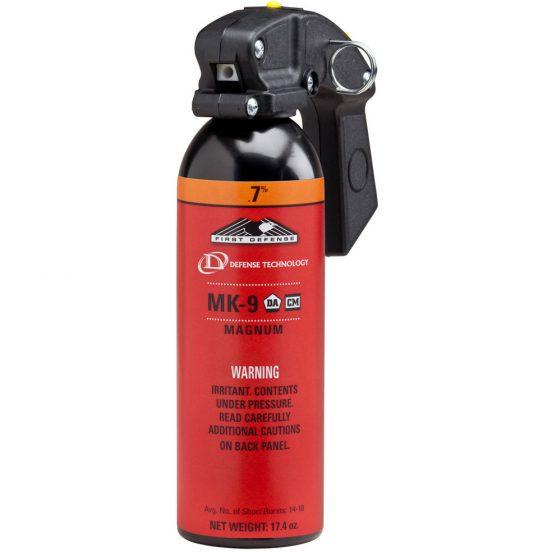Table of Contents
- Understanding the Chemical Composition of Modern Pepper Spray Propellants
- Evaluating Environmental and Safety Considerations in Propellant Selection
- Comparative Analysis of Propellant Performance in Various Deployment Scenarios
- Expert Recommendations for Choosing the Right Propellant in Pepper Spray Canisters
- In Retrospect
Understanding the Chemical Composition of Modern Pepper Spray Propellants
Modern pepper spray canisters rely on a precise blend of propellants to ensure effective delivery and optimal pressure control. Among the most commonly used are hydrofluoroolefins (HFOs) and compressed gases such as nitrogen and carbon dioxide. HFOs are favored for their environmentally friendly profile, offering a low global warming potential while maintaining excellent performance in aerosol dispersion. Compressed gases, on the other hand, provide consistent pressure without the flammability risks associated with older chlorofluorocarbon (CFC) propellants, making them a safer and more reliable choice for personal defense sprays.
In addition to these primary components, some formulations include propane or butane blends that are carefully regulated to balance volatility and spray distance. Manufacturers often optimize these mixtures to deliver a fine, targeted mist that maximizes the effectiveness of the active irritant compounds, like capsaicinoids, while minimizing exposure risk to the user. The choice of propellant not only affects spray dynamics but also influences the overall shelf life and temperature resilience of the canister, ensuring that the defensive tool remains reliable across various environments.
- Hydrofluoroolefins (HFOs): Eco-friendly and efficient aerosol dispersion
- Compressed Nitrogen and CO2: Non-flammable, consistent pressure
- Propane and Butane blends: Enhanced spray reach with regulated volatility
Evaluating Environmental and Safety Considerations in Propellant Selection
When choosing a propellant for pepper spray canisters, manufacturers must carefully balance environmental responsibility with user safety. Traditional options like hydrocarbon-based propellants, while effective in delivering a powerful spray, contribute to volatile organic compound (VOC) emissions, raising concerns about air quality and long-term ecological impact. Innovative alternatives such as compressed gases like nitrogen or carbon dioxide offer lower environmental footprints, as they do not contribute to ozone depletion or greenhouse gas accumulation. This shift toward greener propellant solutions reflects a growing industry commitment to sustainability without compromising the product’s effectiveness in self-defense.
Safety considerations extend beyond environmental impact, directly influencing the choice of propellant. The ideal propellant must maintain stable pressure within the canister across varying temperatures to avoid accidental discharge or failure during critical moments. Additionally, the propellant should be non-toxic and pose minimal health risks upon inhalation or skin contact, both during use and in the case of leaks or misfires. Key factors weighing on manufacturers’ decisions include:
- Non-flammability to reduce fire hazards
- Compatibility with the active irritant compounds
- Consistent spray patterns enabling effective target engagement
By carefully evaluating these environmental and safety parameters, the industry ensures that modern pepper spray canisters are as reliable and responsible as they are defensively potent.
Comparative Analysis of Propellant Performance in Various Deployment Scenarios
When evaluating propellants for pepper spray canisters, performance metrics vary significantly based on deployment scenarios such as personal defense, law enforcement, or crowd control. Compressed gases like nitrogen and carbon dioxide offer immediate and consistent pressure, which ensures rapid and reliable spray discharge in close-quarter personal defense situations. On the other hand, liquid propellants (e.g., hydrofluoroolefins) provide a smoother, steady spray that excels in longer-range applications, maximizing coverage and effectiveness in wider-area scenarios. The choice between these propellants hinges on the required spray pattern, duration, and environmental considerations such as temperature and altitude.
Durability and shelf life are crucial under different conditions. For example, canisters using compressed nitrogen maintain performance integrity better during extreme temperature fluctuations, making them ideal for outdoor use. Conversely, propellants based on hydrocarbon blends can deliver a powerful burst but may degrade faster when exposed to heat or sunlight. Additionally, the environmental impact remains a pertinent factor; newer formulations aim to balance high efficacy with lower ecological footprints, helping users meet evolving regulatory standards. Key considerations include:
- Spray consistency and reach tailored to scenario needs
- Reaction time and trigger sensitivity for rapid deployment
- Stability under various temperatures to maintain reliability
- Environmental compliance to adhere to legal frameworks
Expert Recommendations for Choosing the Right Propellant in Pepper Spray Canisters
When selecting a propellant for pepper spray canisters, experts highlight the importance of balancing pressure consistency, safety, and environmental impact. Modern pepper spray formulations typically employ hydrocarbon gases such as propylene and butane due to their stable vapor pressure at varying temperatures, ensuring a reliable spray pattern regardless of weather conditions. These gases provide strong projection power needed for effective range without compromising control, minimizing the risk of blowback during deployment.
In addition to performance, safety considerations are paramount. Many manufacturers prioritize propellants that are non-flammable and exhibit low toxicity to reduce risks in accidental exposure or storage. Emerging trends also favor environmentally friendly options like compressed air or nitrogen blends, which eliminate volatile organic compounds (VOCs) and reduce overall environmental footprint. When evaluating options, professionals recommend reviewing factors including:
- Compatibility with the active capsaicin formula
- Pressure stability over time
- Temperature performance range
- Environmental and regulatory compliance
In Retrospect
In today’s ever-evolving landscape of personal safety, understanding the key propellants powering pepper spray canisters is essential for both users and manufacturers alike. These specialized compounds not only ensure the effective delivery of the active ingredients but also play a critical role in the canister’s reliability, shelf life, and ease of use. As technology advances, we can expect further innovations that enhance performance while prioritizing safety and environmental considerations. Staying informed about these propellants empowers consumers to make smarter choices and helps industry leaders continue to develop effective self-defense tools that meet modern demands.Check Our Other Blogs
- StunGun – Your Trusted Source for Stun Guns, Laws, and Self-Defense Tips
- PepperSprayLaws – Your Trusted Resource for Pepper Spray Information
- StunGunLaws – Your Trusted Guide to Stun Gun Legality and Safety




